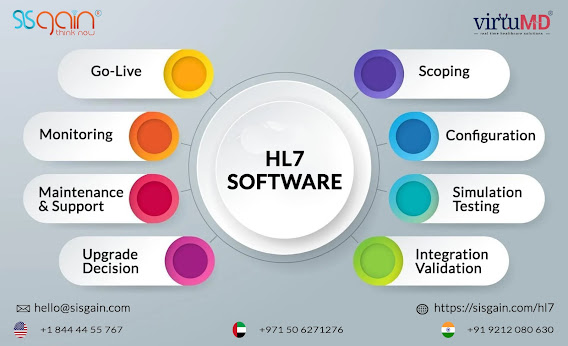HL7 Interface Development: Streamlining Healthcare Data Integration
Introduction to HL7 Interface Development:
In the ever-evolving world of healthcare technology, efficient data integration has become increasingly important. One of the key players in this field is HL7, which stands for Health Level Seven. HL7 is a set of international standards for the transfer of clinical and administrative data between healthcare systems.
HL7 Interface Development involves building a connection between healthcare systems that may use different software or protocols. This interface can help in exchanging data, enabling better communication between healthcare providers, and streamlining processes.
Understanding HL7 Healthcare Standards:
HL7 Healthcare Standards have been developed to ensure consistency and interoperability between different healthcare systems. The HL7 standards define the format, structure, and content of the data being transferred.
The HL7 standard is divided into several categories, each of which covers a specific aspect of healthcare data. These categories include:
HL7 Version 2: This standard is widely used and covers messaging for clinical, financial, and administrative data.
HL7 Version 3: This standard is designed for the exchange of clinical documents and covers a wide range of healthcare information.
HL7 FHIR: This standard is the most recent addition and is designed to enable interoperability between different healthcare systems.
Benefits of HL7 Integration:
HL7 Integration can help healthcare organizations in several ways, including:
Improved Communication: HL7 Interface Development can help in exchanging data between different healthcare systems, enabling better communication and coordination between healthcare providers.
Enhanced Patient Care: By providing access to complete patient records, HL7 Integration can help in improving the quality of patient care.
Streamlined Processes: HL7 Integration can help in automating processes such as patient registration, appointment scheduling, and billing, leading to greater efficiency and reduced costs.
Better Analytics: HL7 Integration can help in collecting data from different sources, enabling better analysis and decision-making.
HL7 Software Solutions for Interface Development:
There are several software solutions available for HL7 Interface Development, each with its own set of features and capabilities. Some of the popular solutions include:
Mirth Connect: This open-source solution provides a wide range of features, including HL7 message transformation, routing, and filtering.
Cloverleaf: This solution is designed for complex healthcare environments and provides features such as message routing, transformation, and monitoring.
Ensemble: This solution is designed for integration with Electronic Health Records (EHRs) and provides features such as HL7 message processing, data transformation, and event monitoring.
Hiring an HL7 Interface Developer:
Building an HL7 Interface requires specialized skills and knowledge. Hiring an HL7 Interface Developer can help in ensuring that the interface is built to the required standards and is customized to meet the specific needs of the organization.
When hiring an HL7 Interface Developer, it is important to look for someone with the following skills:
Strong knowledge of HL7 Healthcare Standards: The developer should have a thorough understanding of the HL7 standards and how they apply to healthcare data.
Experience in Interface Development: The developer should have experience in building HL7 interfaces and integrating healthcare systems.
Knowledge of HL7 Software Solutions: The developer should have knowledge of popular HL7 software solutions and their capabilities.
Strong Communication Skills: The developer should have strong communication skills to ensure that the interface is built to the specific needs of the organization.
Conclusion:
HL7
In conclusion, HL7 Interface Development plays a crucial role in healthcare data integration. With the help of HL7 Healthcare Standards and HL7 software solutions, organizations can build interfaces that enable better communication, streamlined processes, and improved patient care. Hiring an HL7 Interface Developer with the required skills and knowledge can help in ensuring that the interface is built to the required standards and is customized to meet the specific needs of the organization. As the healthcare industry continues to evolve, HL7 Interface Development will continue to play an important role in enabling healthcare organizations to achieve their goals.

